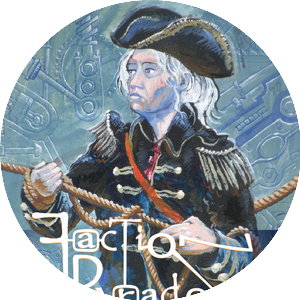Invitation
When I handed in my first draft of The Black Archive #58: The Talons of Weng-Chiang, I was told that Obverse supremo Stuart Douglas would be editing the book and that he would be in touch to discuss the practicalities. I hadn’t actually spoken to Stuart for a good while, so it was nice to catch up, but also very well timed: he was just finalising an agreement with Stephen Wyatt about an Obverse short story collection based on his 1987 Doctor Who episode, Paradise Towers.
Stuart was just at the point of needing some story ideas to pass to Stephen for consideration, and asked if I would be interested in submitting one. By another coincidence, I had just finished rewatching Paradise Towers and my fond memories of it hadn’t been dented at all. I knew it was a world with plenty of scope for me to tell a story in, and one I’d be quite pleased to spend some time in. After agreeing some ground rules - some ideas were off limits as Stephen was planning to use them in his own story for the collection - I said I’d go away and see what I could come up with.
Inspiration
I’d known that Paradise Towers had been inspired by JG Ballard’s High Rise, but it wasn’t a book I’d ever read. Watching the DVD extras told me that it was a book written as a reaction to high rise council estates where architecture was almost an additional character. That was something I did know about: my adoptive home town of Manchester had a number of those high rises in it, and I knew of the impact their architecture could have on a community. In particular, the overhead walkways between them were thought to have made Manchester’s drug and gun problems worse, for reasons that were both practical and psychological. Those walkways were also a feature of Paradise Towers, and suggested to me a story about how architecture impacted on the people who had to live in it.
Thinking about that sparked a distant memory of a short film I’d watched in my youth, primarily because it starred Ewan McGregor and featured Peter Capaldi, two actors I’d fallen in love with since watching Trainspotting and Neverwhere respectively. The film was the directorial debut of McGregor’s uncle, Denis Lawson, and was - I’ve since learned - based on the Ian McEwan story Solid Geometry. Whilst it didn’t feature architecture, it did revolve around the discovery of a new branch of mathematics that could have startling effects in the real world: picture Logopolis, if it had been written in the New Adventures era.
Getting the Story
Armed with two ideas I thought could dovetail nicely into each other, I asked Stuart if he had ever seen the film. He had, and agreed with me that it could make an interesting addition to the version of Paradise Towers he was building. He ran the idea past Stephen to ensure there were no objections from his side, and suggested we steal the title from the source material: Solid Geometry.
In the meantime, we discussed a few details about tone: Stuart was keen the book was to be a celebration of the story not a post-modern sneer at its limitations, and my natural response to the natural inconsistencies that crop up in any story was to investigate them a little. In particular, I wondered about the timeframe of the backstory: the residents being moved in as everybody was shipped off to war made sense given their ages would have made them unsuitable for military service, but then the ages of the caretakers on screen suggested that at least a few of them were dodging the draft. i knew that this was also a niggle at the time - the original idea had been that the caretakers were to be as old as the rezzies, but the director and producer had instead cast (some fabulous) actors who were significantly younger. That made sense of that, but that didn’t explain the Kangs for me: given they were all girl gangs, there must be some reason why there were no boys around. If no-one else was providing one in their stories, I thought I might in mine. But I wasn’t sure that wouldn’t be seen as a criticism of the original storey’s logic, and Stuart agreed it might be best to err on the side of caution.
I did still manage to include a few explanations and side notes as I wrote my story, including one subtle reference to Heritage that I couldn’t help sneaking in. Once it was finished, I let it rest for a few days before setting out to edit it down to size, and tidy up any bits I still wasn’t happy with before sending it off to Stuart.
What Happened Next?
A draft copy of the final book arrived a few weeks later for me to take a look at, and I found a few more things I wanted to change - including the story’s title - which fortunately Stuart could accommodate. As I write, the book is due out in around a month and I’m looking forward to seeing what kind of impact it makes. If it’s popular, it could be the start of further explorations of the Paradise Towers universe, and maybe we’ll finally get to find out what happened in that damned war.


